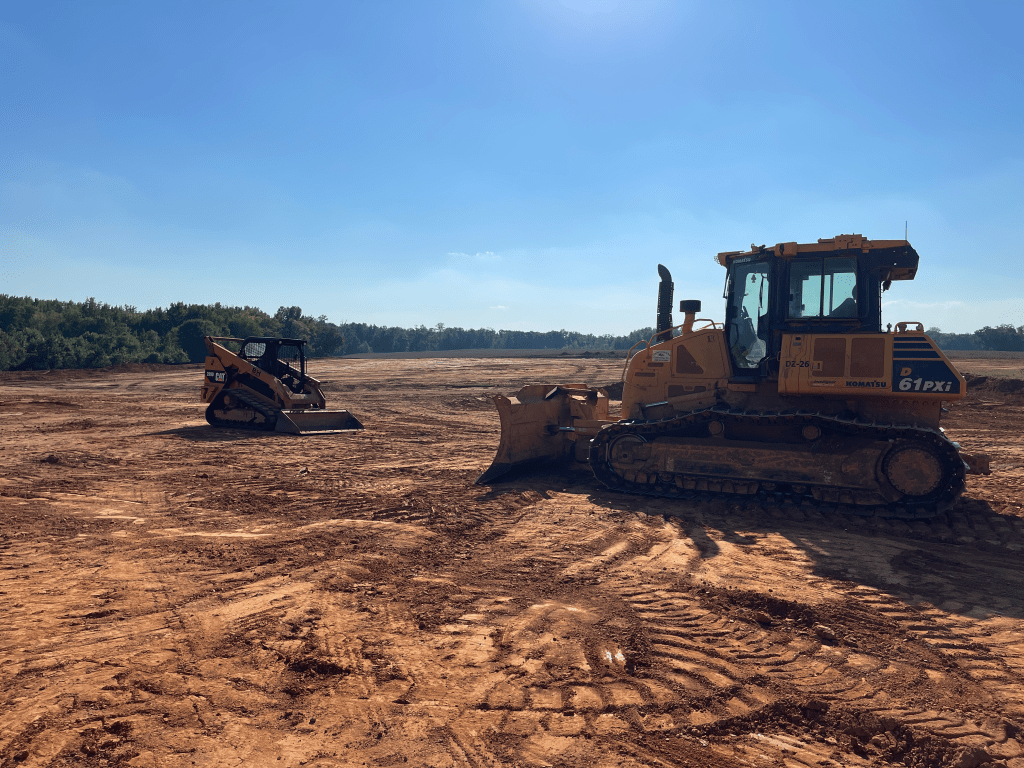The cost of population growth
Published 4:00 pm Wednesday, October 26, 2022

- Undeveloped land cleared in Elkmont to build the new Elkmont Elementary School.
Limestone County is the fastest growing county in Alabama, and the cost of this growth is the loss of undeveloped land.
Many farmers in Limestone County in the last decade have ceased production and sold their land to developers.
“When a developer comes to you and knocks on your door and asks you ‘how many zeros do I have to put at the end of this one to get you to sell your land’ it’s very difficult to say no,” County Extension Coordinator Chris Becker explained. “You hate to see the farmland swallowed up by industry and brick and mortar homes and commercial properties, but I mean, it’s the fastest growing county in the state and with that growth comes development and most property that’s undeveloped is going to be ag land.”
Becker went on to say, “people are moving to Limestone County in unprecedented numbers and need to have places to live, they need to have places to shop, they need to have jobs. That growth does come at a cost, and the cost is farmland.”
According to a report published by the Alabama Agribusiness Council in 2013, there were 236.6 thousand acres of farmland and 1,352 farms in Limestone County. The total economic impact of crops, livestock, forestry, and fisheries production in 2013 was $253.9 million and 2,984 jobs.
The 2017 Census of Agriculture noted a decline in economic impact, number of farms, and farmland acreage. Agriculture had a $131.4 million economic impact and there were 1,156 farms and 224,822 acres of farmland.
Since 2012, Limestone County has seen a 6 percent decrease in farms, 9 percent decrease in farmland acres, and a 1 percent decrease in economic impact.
“That’s quite a difference,” Becker said.
Environmental impact
The vanishing of farmland not only has an economic impact on the county, but also an environmental impact.
“Concrete and asphalt do nothing for the environment,” said Becker. “There’s no environmental benefit to having strip malls. There is an environmental impact when undeveloped pasture land gets turned into 100 thousand square foot of stores.”
The concrete creates runoff containing “chemicals and things that wash off from car engines and pollutants that then end up in streams, creeks, and rivers, so that is an environmental impact.”
There is a misconception that farmers use a significant amount of chemicals and pesticides in their practices.
“They’re only going to apply those products if they have to, because it comes off their bottom line,” said Becker. “Every time they crank that tractor, every time they spray something, every time they throw out fertilizer, that’s money off the bottom line so they’re not just randomly throwing stuff out there just for the heck of it. They’re doing it for the benefit of the crop.”
Farmers traditionally are caretakers of the land they reside on and, as such, have a positive impact on the environment.
“Farmers aren’t just growing crops, they have to be chemists, they’ve got to be botanists, plant physiologists. If they were in it just to care about the crop they wouldn’t be in it very long,” said Becker.
Many farmers are opting for no till practices to reduce erosion and nutrient runoff and they do soil testing to make sure what they’re doing is sustainable.
“The minute that it is no longer sustainable, they’re no longer successful,” said Becker. “People think farming is all about the chemicals and the fertilizer but they don’t want to put that stuff out any more than they absolutely have to to get the best quality product that they can for all of us.”
As the population grows, farmland decreases and farmers have to learn to produce more food with less land.
“I think by 2050 we’re going to be getting near 10 billion people on this planet,” said Becker. “The only way we’re going to be a world leader in producing food for the rest of the world, we have to grow more on less with less resources.”
In order to do that, farmers have to embrace technology.
“Some of the technology farmers have at their disposal would rival the space program. I mean, there’s some very technologically advanced equipment and products in agriculture and it’s given us as Americans the safest and the most secure food supply in the entire world,” Becker explained.
The future of farming
“We need to get more young people interested in agriculture,” said Becker.
The average age of a farmer in the United States is in their mid-60s.
“You don’t wake up in the morning and say, you know what, I think I want to leave my corporate job and go farm 3,000 acres of cotton,” Becker said. Most wouldn’t have access to that kind of land and wouldn’t have millions of dollars to spend on the equipment to be able to farm that much cotton.
“A lot of it is family farms, you know, passing down the operation from generation to generation,” he said. “The amount of young people that are interested in being involved in ag is probably at an all time low.”
Many kids believe working in agriculture is just about driving a tractor and harvesting crops.
“If you’re interested in engineering or if you’re interested in chemistry or biology, sales, community relations, public speaking, nursing, or other fields, they all contribute to agriculture,” he said. “Agriculture is the largest job producer in the state of Alabama, hands down.”
The future of farming is dependent on the youth of today.
“We’ve just got to get the kids to understand that there are so many different roads and avenues that they can pursue that supports agriculture. It’s more than just, you know, cattle, pigs and corn,” said Becker.


